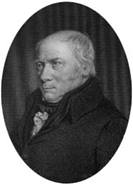 |
| Although not marked on Smith's 1815 Map, Rugbourne Farm is near Timsbury (centre right). The black areas and crosses indicate coal and coal mines. The Somerset Coal Canal is the black line on the right. |
Whilst travelling around, working as assistant to Edward Webb, William Smith had taken notice of the rock formations in each locale, however it was not until 1791 that his observations became more significant. Smith was tasked with surveying an estate at Stowey, Somersetshire, and was lodged nearby at Rugbourne Farm, High Littleton. There, he observed similar layers of rock, that is the same stratigraphy, that he had previously witnessed at Worcestershire – the red marl lying in the same formation with the lias and superincumbent rocks. Additionally coal was mined around the High Littleton area and Smith was charged with investigating the state of the collieries for his employer, and through these subterranean surveys he continued to note and compare the regularity in the successions of strata between the different coal pits.
Finally, when work on the double branched Somerset Coal Canal began in July 1795, Smith found that the stratigraphy in each excavation, although two miles apart, was the same. Most importantly he recorded the following observation which would become fundamental to his work from then on:
|
"Fossils have been long studied as great curiosities, collected with great pains, treasured with great care and at great expense, and shown and admired with as much pleasure as a child’s rattle or a hobby-horse is shown and admired by himself and his playfellows, because it is pretty; and this has been done by thousands who have never paid the least regard to that wonderful order and regularity with which Nature has disposed of these singular productions, and assigned to each class its peculiar stratum. [William Smith, 5 January 1796, in Phillips, J, ‘Memoirs of William Smith, LLD’, (1844) pp17-18]
|
 |
|